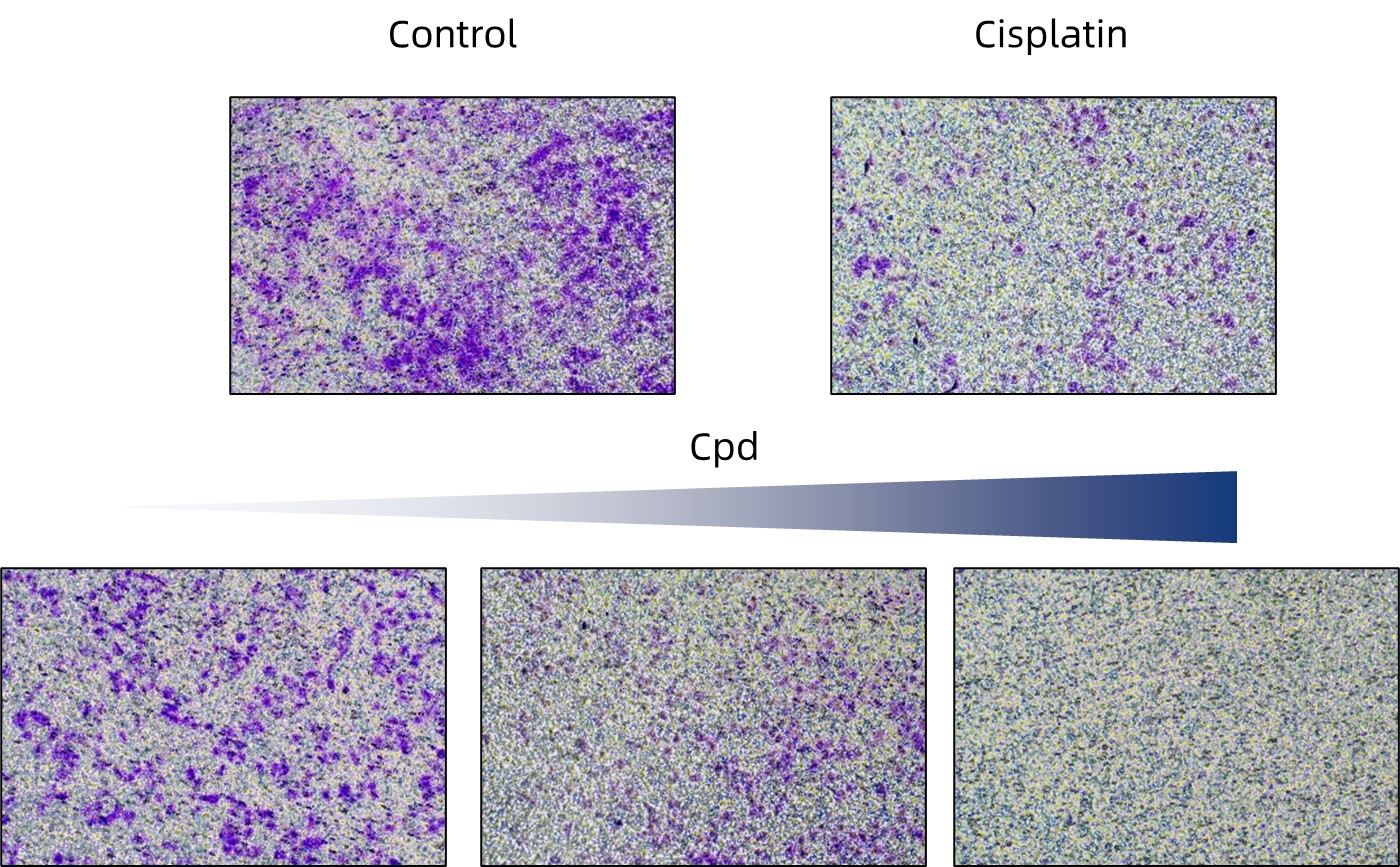The Transwell Migration Assay and its specialized variants, the Chemotaxis Assay and the Invasion Assay, are essential tools for studying cell motility and invasiveness in various biological contexts. These assays utilize a Transwell insert, which consists of an upper and lower chamber separated by a porous membrane. The fundamental principle across these assays is to observe and measure the movement of cells through this membrane, providing insights into cell behavior under different conditions.
Principle: This assay measures the general ability of cells to migrate through a porous membrane. Cells are seeded in the upper chamber, and their movement towards a medium in the lower chamber is tracked. The medium may contain nutrients but no specific chemoattractants.
Method: After a defined incubation period, cells that have migrated to the lower surface of the membrane are fixed, stained, and quantified. This provides a measure of the cells' intrinsic motility and response to the surrounding environment.
Principle: A specialized version of the Transwell Migration Assay, the Chemotaxis Assay specifically evaluates the directed movement of cells in response to chemical signals, known as chemoattractants, present in the lower chamber.
Method: Similar to the Transwell Migration Assay, cells are placed in the upper chamber. However, the lower chamber is filled with a medium containing a chemoattractant. The directional migration of cells towards this chemoattractant is quantified, allowing for the study of chemotaxis—an essential process in immune responses and cancer metastasis.
Chemotaxis assays, used in drug discovery, measure cell migration in response to a chemical stimulus. Cells are placed in a 96-well plate with a porous membrane, and their movement towards a chemoattractant is quantified, often via ATP content. This allows for the evaluation of potential drug compounds that may influence this process, crucial in areas like inflammation and oncology. The assay’s specifics, such as cell type and chemoattractant, can greatly impact results.

Schematic of transwell chemotaxis assay principle.

Chemotaxis Assays on Various Targets: This graph illustrates the impact of different drugs on chemotaxis assays targeting specific chemokine receptors. The drug RS 504393, a selective antagonist for CCR2, is tested on THP-1 cells. AZD2098, a potent and selective antagonist for CCR4, is evaluated on CD4+ T(reg) cells. The CCR8 antagonist AZ084 is tested on H9 cells. Lastly, the GPR84 antagonist GLPG1205 is assessed on Neutrophils. The cell migration percentage is plotted against the drug concentration, providing insights into the efficacy of these drugs in modulating cell chemotaxis.
Principle: The Invasion Assay extends the concept of cell migration by introducing a barrier that mimics the extracellular matrix (ECM), such as Matrigel, on the porous membrane. Cells must first degrade this ECM barrier before migrating through the pores, simulating the process of tissue invasion.
Method: Cells are seeded in the upper chamber, which is coated with an ECM-like barrier. Their ability to invade through this matrix and migrate towards the lower chamber is assessed after incubation. This assay is particularly relevant for studying cancer cell invasiveness and the effectiveness of anti-metastatic treatments.

Cancer Research: All three assays are invaluable for understanding different aspects of cancer cell behavior, from basic motility to complex invasion mechanisms.
Immunology: The Chemotaxis Assay, in particular, is critical for studying immune cell migration towards infection sites or tumor environments.
Drug Development: These assays are widely used to evaluate the impact of therapeutic compounds on cell movement, chemotaxis, and invasiveness, aiding in the development of anti-cancer and anti-inflammatory drugs.
We value your inquiries and are here to provide you with tailored solutions for your drug discovery and development needs. Whether you have questions, require more information, or are interested in discussing potential collaborations, our team of experts is just a message away.
Feel free to reach out to us.